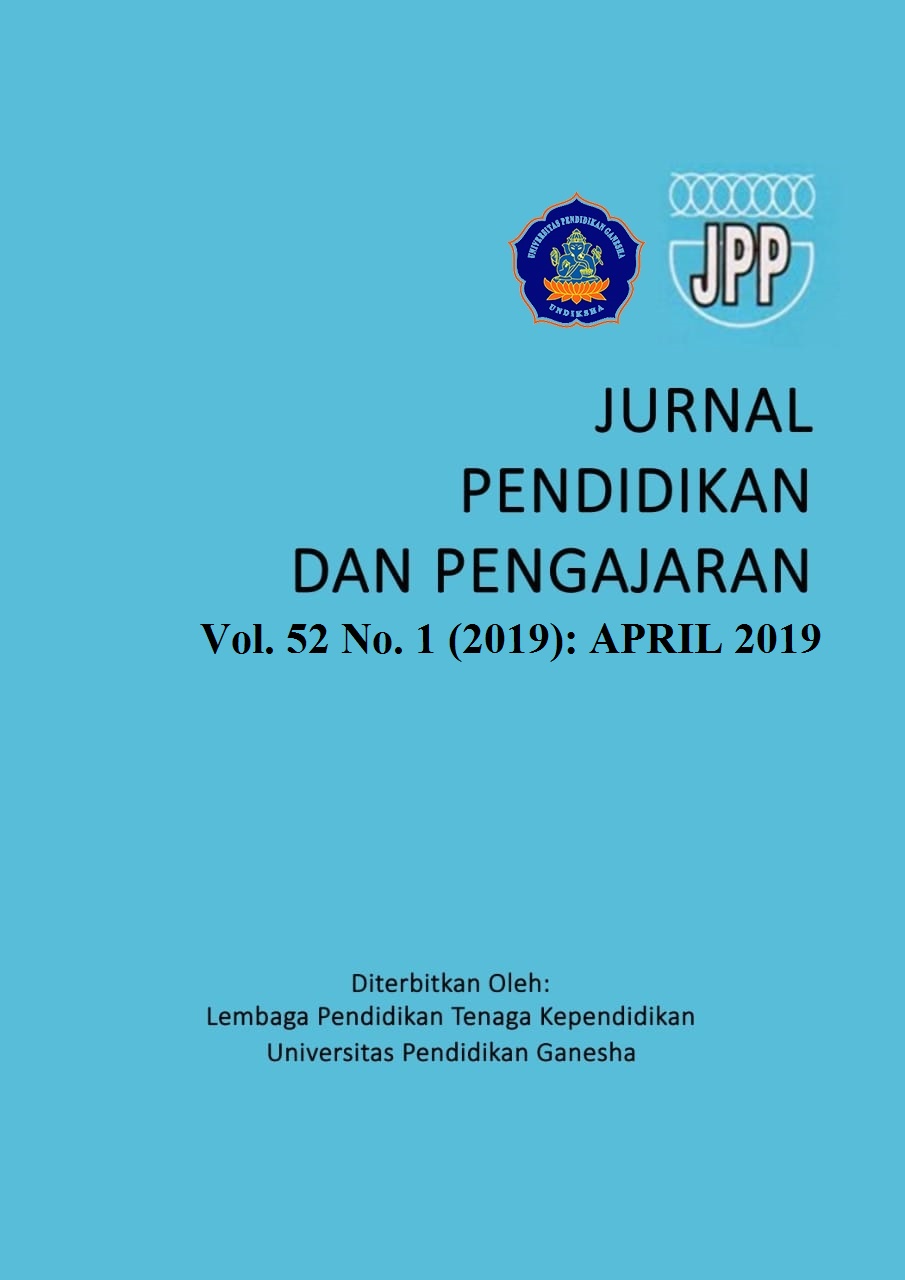Development of problem-solving-oriented mathematics learning tools with TANDUR setting to improve mathematics learning outcomes
DOI:
https://doi.org/10.23887/jpp.v52i1.17243Kata Kunci:
problem-solving-oriented mathematics learning tools, TANDUR setting, learning outcomesAbstrak
This study aimed to develop and produce a problem-solving-oriented mathematics learning tool with “tumbuhkan”, “alami”, “namai”, “demonstrasikan”, ulangi”, “rayakan” (grow, experience, name, demonstrate, repeat, and celebrate) (TANDUR) setting to obtain a valid, practical and effective learning tool, and improving mathematics learning outcomes of class X Stone-Concrete Construction at SMK Negeri 1 Denpasar. This research was development research with problem-oriented learning model through TANDUR setting using learning support tools which included student manual, teacher manual and RPP. The development of learning tools followed the development procedure of Plom model which consists of 3 phases, namely: 1) Preliminary Research Phase, 2) Prototyping Phase (iteration process of analysis, design and development, formative evaluation and revision), 3) Assessment Phase (semi summative assessment). The subjects of the study were 28 students of class X KB2 at SMK Negeri 1 Denpasar. The required research data included validity, practicality and effectiveness data of learning tools. The validity of learning devices was tested through expert assessment. While the practicality and effectiveness of learning tools were tested through field trials. The results showed that the developed learning tools were valid with the average score of validation on 1) the student book was 3.7 which categorized very valid, 2) the teacher manual 3.8 which categories as very valid. The practicality of the developed learning tools on 1) implementation of learning devices conducted on field trials I averaging 3.1 which categorized as practical, 2) implementation of learning devices on field II averaging 3.2 which categorized as practical. The developed learning devices were effective with the average of the test score of the learning result on the field trial I was 78.92 with the good category, and the results of field study II was 86.07 with the excellent category which had exceeded the value of the Minimum Completion Criteria.
Unduhan
Diterbitkan
Cara Mengutip
Terbitan
Bagian
Lisensi
Authors who publish with Jurnal Pendidikan dan Pengajaran agree to the following terms:- Authors retain copyright and grant the journal the right of first publication with the work simultaneously licensed under a Creative Commons Attribution License (CC BY-SA 4.0) that allows others to share the work with an acknowledgment of the work's authorship and initial publication in this journal
- Authors are able to enter into separate, additional contractual arrangements for the non-exclusive distribution of the journal's published version of the work (e.g., post it to an institutional repository or publish it in a book), with an acknowledgment of its initial publication in this journal.
- Authors are permitted and encouraged to post their work online (e.g., in institutional repositories or on their website) prior to and during the submission process, as it can lead to productive exchanges, as well as earlier and greater citation of published work. (See The Effect of Open Access)





